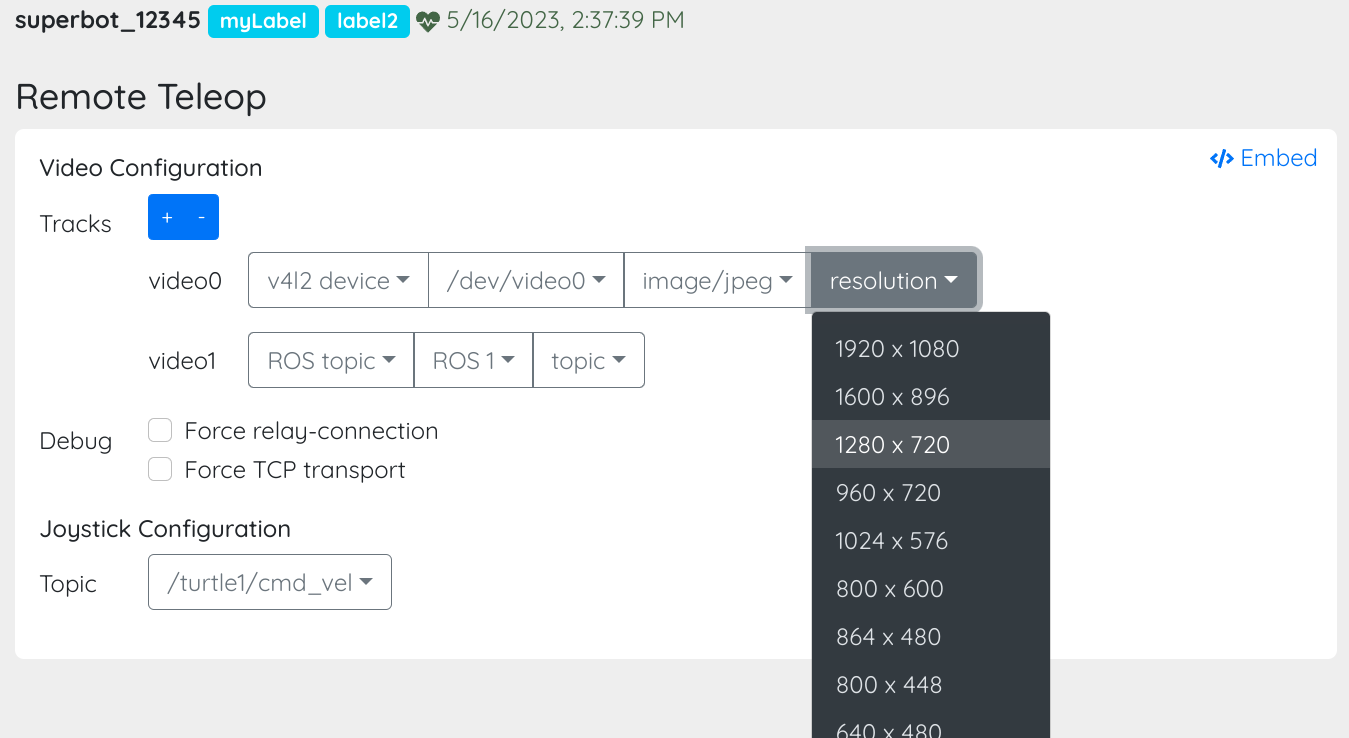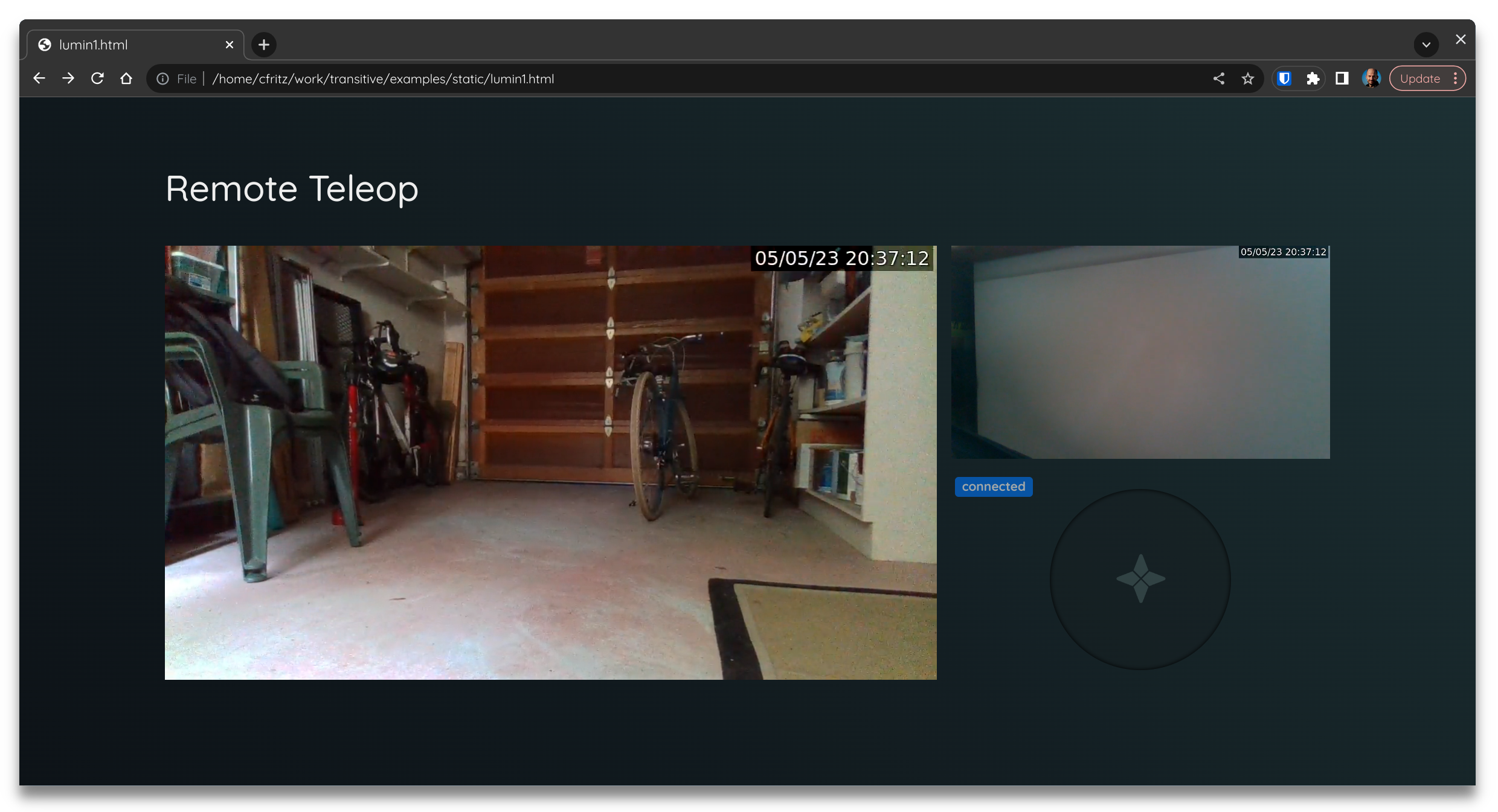Build your own
Robot Fleet Management System
Transitive solves the make vs. buy dilemma by giving you full-stack robotic capabilities you can embed in your own, ideal system.
What are Capabilities?
Capabilities are independent modules each consisting of a robot component, a cloud component, and one or more front-end/web components. These components communicate seamlessly through the Transitive framework, working together to add new, interactive functionalities to your fleet.
The Transitive framework is specifically designed to allow these web-components to be embedded in your own web portals and pages, just like embedding a YouTube video but with authentication to provide access control. Each capability is individually priced and you only pay for the capabilities you are actively using.
Several of our capabilities support ROS (1 + 2) and work well with it, but Transitive itself does not require ROS.

Example Capability: Remote Teleoperation with video over WebRTC
Example Capability: WebRTC Video
Make vs. Buy: solved
Every robotics company faces this dilemma: should we build our own fleet management system or use a third-party SaaS offering? Neither of these options is good because the former takes a long-time, defocuses the company, and takes a lot of money. The latter suffers from a glass ceiling: eventually the capabilities of those third party solutions will not meet our needs anymore because every robotics application and company is different. This is why we built Transitive, to create a middle-ground between "make" and "buy": making it easy to build your own, perfect fleet management system by giving you the modules you needs.


Christian created the open-source Transitive framework out of the belief that the robotics industry is lacking a shared, open platform for the development of full-stack robotic software. As a result, robotics companies lose time creating their own cloud middle-ware for robotics and reimplementing dozens of common full-stack components when this time could be better spent on their specific product. Christian has worked for six different robotics startups and has seen this time and time again. Previously, Christian was VP of Software at Savioke, maker of the Relay delivery robot for hotels and hospitals, where he helped scale the fleet from 5 to over 100 robots operating on three continents. Christian earned a PhD in artificial intelligence from the University of Toronto and is the author of over 40 publications and 17 patents.















